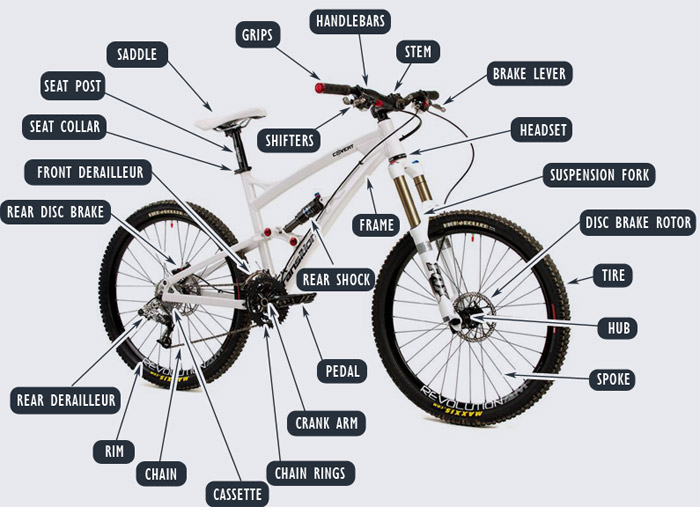
6. Interested in Interests?
For the most part, we as individuals are defined by our physical characteristics which extend from gender and age, all the way down to the finer details such as presence of scars/birthmarks, and eye colour. In life we learn, and encounter certain experiences which shape the way we think and interact with the world, so even if you have an identical twin; you are well and truly defined by your personal experiences. And on top of all this, we make further interactions with this world through choices in regards to occupation and interests.
So no-one person is identically the same, because individuality is expressed through physical characteristics, experiences, choices, and interests. It is darn near impossible to have all these in common with another person.
So you come across people in your lifetime and regard them as a friend. You talk about your lives, sometimes talk through your choices before you make them, and at times you want to share your interests. But how hard can it be to share your interests? Surely if someone is a close friend and you get along well, it stands to reason that they might enjoy your interests too right?
If you’ve been reading this blog long enough, you’ve jumped to the conclusion that I’m about to talk about sharing my interest in mountain biking with my friends, family and partner. Not quite.
I’ve already established that mountain biking is full of dangers (Rider Files 2), involves commitment (Post 1 and Rider Files 4), and has certain unspoken codes which you learn over a great deal of time (Rider Files 3). I tried to introduce it to my brother and he was too tentative to push himself and enjoy the thrill. My best friend had a bike, but was barely capable of riding cyclocross. And my partner is keen to get into mountain biking, and in due time she will learn how to ride, rather than being thrown into the crucible of a black trail on a department store bike…
What I am going to relate to with interests however is reading. Recreational reading that is.
For some, reading can be the most incredible mental experience they can have, since an author will merely provide words on a page for the audience to follow, but the reader then paints the picture, fills in the details, and what forms in the mind’s eye can be absolutely brilliant. The reader is control of the pace, so while some may scruitinise over tiny details within the words, some people read at such an incredible speed that the book can become a movie of sorts. This is the power of reading, and why it should be cherished for both young and old.
But reading carries a unique weight with it. Unlike a Youtube video which may take 4 minutes to watch, a TV episode may take half an hour to an hour, and a movie can last up to 3 hours; a book is a long term commitment which may take days to months to finish depending on reading speed and length. Once you commit to a book, it may take a while for you to finish it to finally know if it was all worth it. And a lot of people will base their opinions on the author, the genre, and the subject matter itself.
I am a huge Matthew Reilly fan. I regard him as my favourite author, and a true Australian talent in the literary world. The short 50 words on why I love his writing is that the pace is dynamic and allows balance between action, problem solving and picturesque detail; his books cover everything from ancient history, geo-politics, and science fiction in between; and there’s a range of solo books and sagas for anyone to access. He also has Star Wars memorabilia and a DeLorean from Back to the Future, big thumbs up from me in that regard! But with the unique weight that reading has, it’s hard to get anyone close to me excited enough to begin reading his books…
My sister got a copy of Contest for her birthday, but never read past the 2nd chapter of it because of her studies getting in the way. My best friend is interested in geo-politics and likes a good thriller, so he nearly read Ice Station but picked up the brand new book from his favourite author at the time, so forgot about Ice Station. I’d like to introduce my partner to Great Zoo of China, but they are in deep with the Game of Thrones books.
Books are the perfect example of how tricky it can be to get someone close to you involved with your hobbies and interests. While there is a temporary joy in sharing your interests with someone for a short time, we yearn for that person to fall in love with the interest. That way we can not only talk and discuss with them about our interests, but it can bring you closer together and you might feel more comfortable around them after showing them another side of yourself and accepting it.
But like the cliche goes, you can lead a horse to water but you can’t make it drink. Even if you have a silly straw. With interests there is only so much you can show them and try and get them excited about it, in the end they have to have the right attitude to take it on, and might expect something in return.
With reading, I can’t jam a book under their nose and expect them to have it read by sunrise the next day and have enjoyed it. Some people are honestly not that invested in reading. Some people are very genre specific and find other genres uninspiring or tedious. Some people don’t like particular writing styles.
In all fairness, my best friend introduced me to Tomorrow When the War Began book series in preparation for the movie that came out in 2011, but I never read past the first book because I didn’t like the writing style. I honestly had the right attitude and I like a good political action novel, but the writing style did not mesh well with me. I read the Harry Potter books as a teenager, and enjoyed them at the time, but I’m not compelled to buy my own set for adulthood and read them over and over again. A few people may be heart broken by that statement, but honestly the genre doesn’t sit well with me anymore.
The other thing is, that the person you are wanting to adopt your interest would like something back in return. Not blackmailing you by any means, but a reciprocation so you have something to talk about two fold.
If I introduced my brother to mountain biking, he might appreciate it more if I went road biking with him. If I had introduced Metroid Prime trilogy to my best friend, they would have appreciated if I played Legend of Zelda. When I introduce my partner to Matthew Reilly books, I know they will offer the books or TV series of Game of Thrones in return. Winter is coming and so is the return favour…
So if you want to introduce an interest to a close friend, family member or partner; consider the commitment they will need to become immersed in it, and the prospect of you possibly having to undertake one of their interests to show you really care for them as well. Not every interest is ideally shared amongst those closest due to price, time, risk or complexity. But if it is something simple in essence like a TV show, reading, a simple hobby, or a fairly safe sport; then by all means ask them if they would like to try your interest?
Sharing interests is one way of building and reinforcing positive relationships with those around you, so give it a try?
Meanwhile, my partner is waiting on the next Game of Thrones book, while I’m keen for the new Jack West Jr novel from Matthew Reilly to be released in October. So we share the common interest of waiting for new books I suppose?

